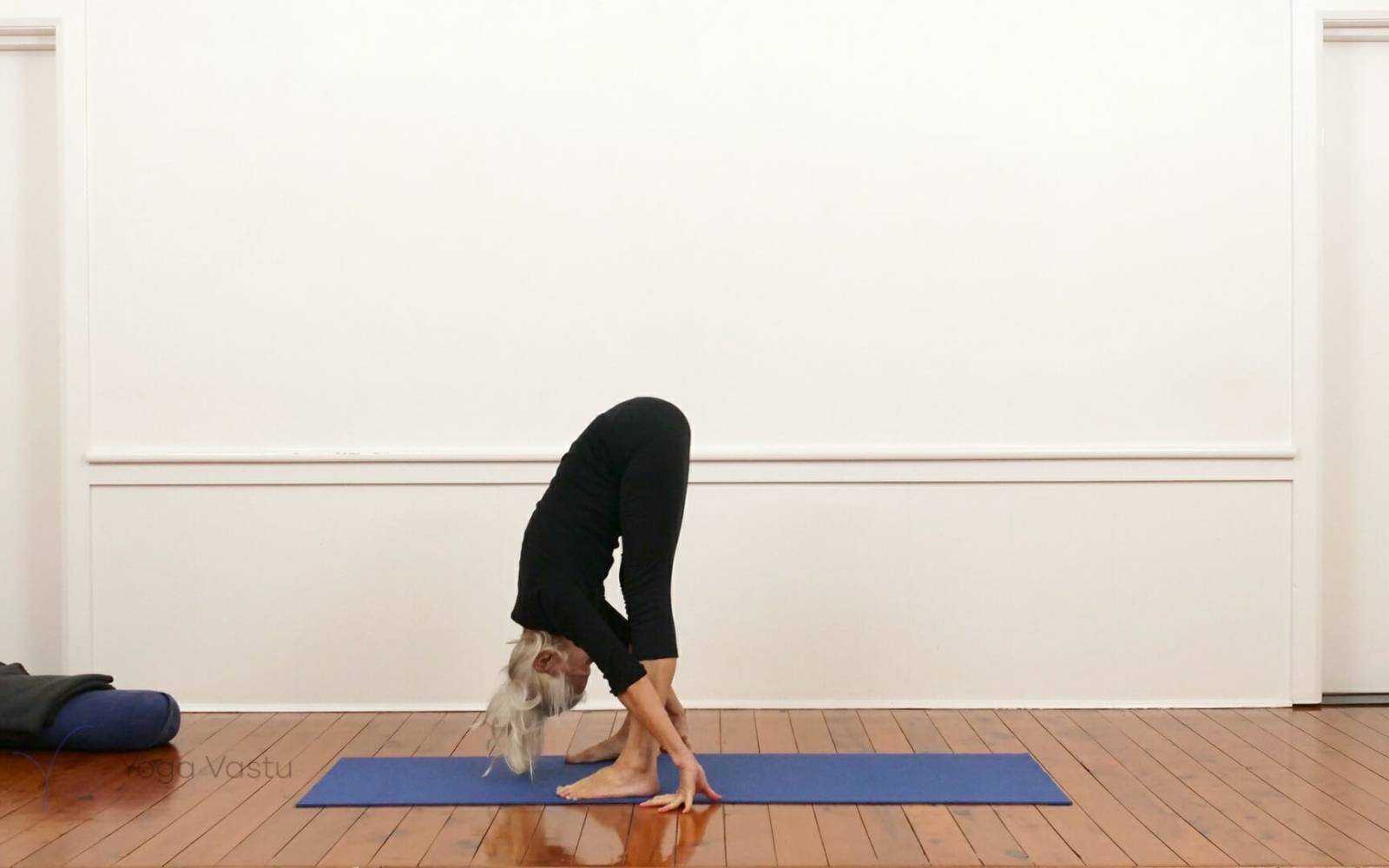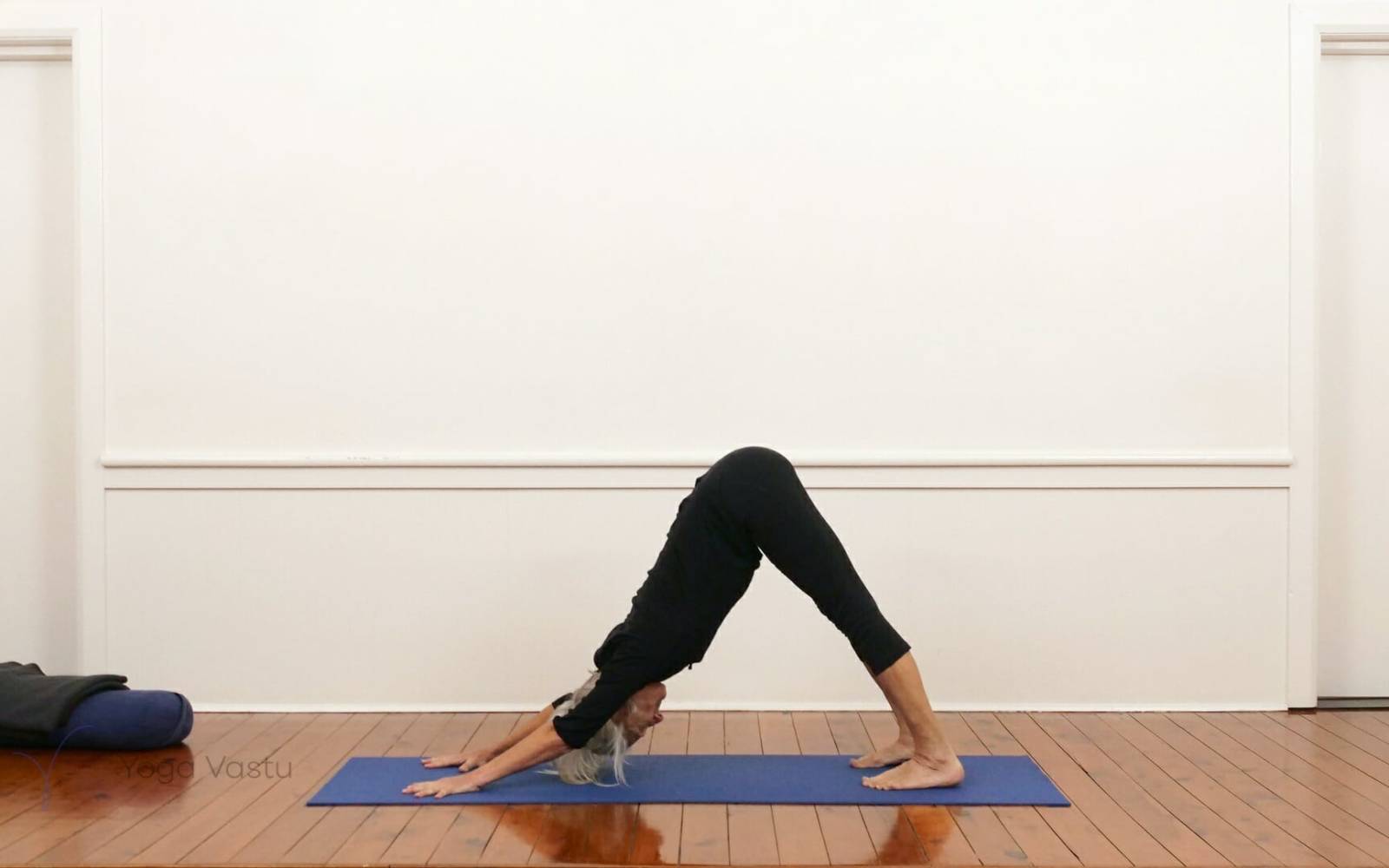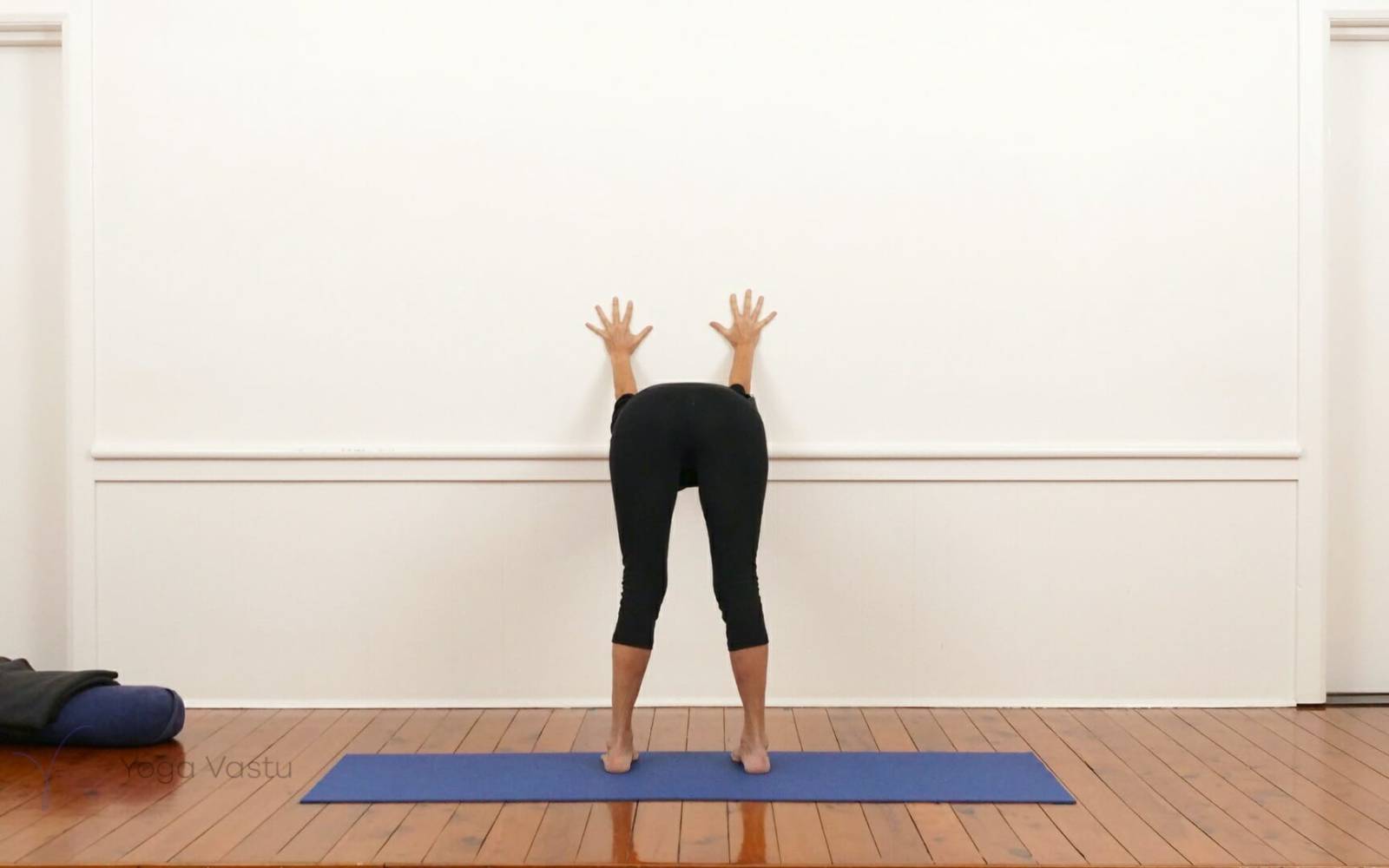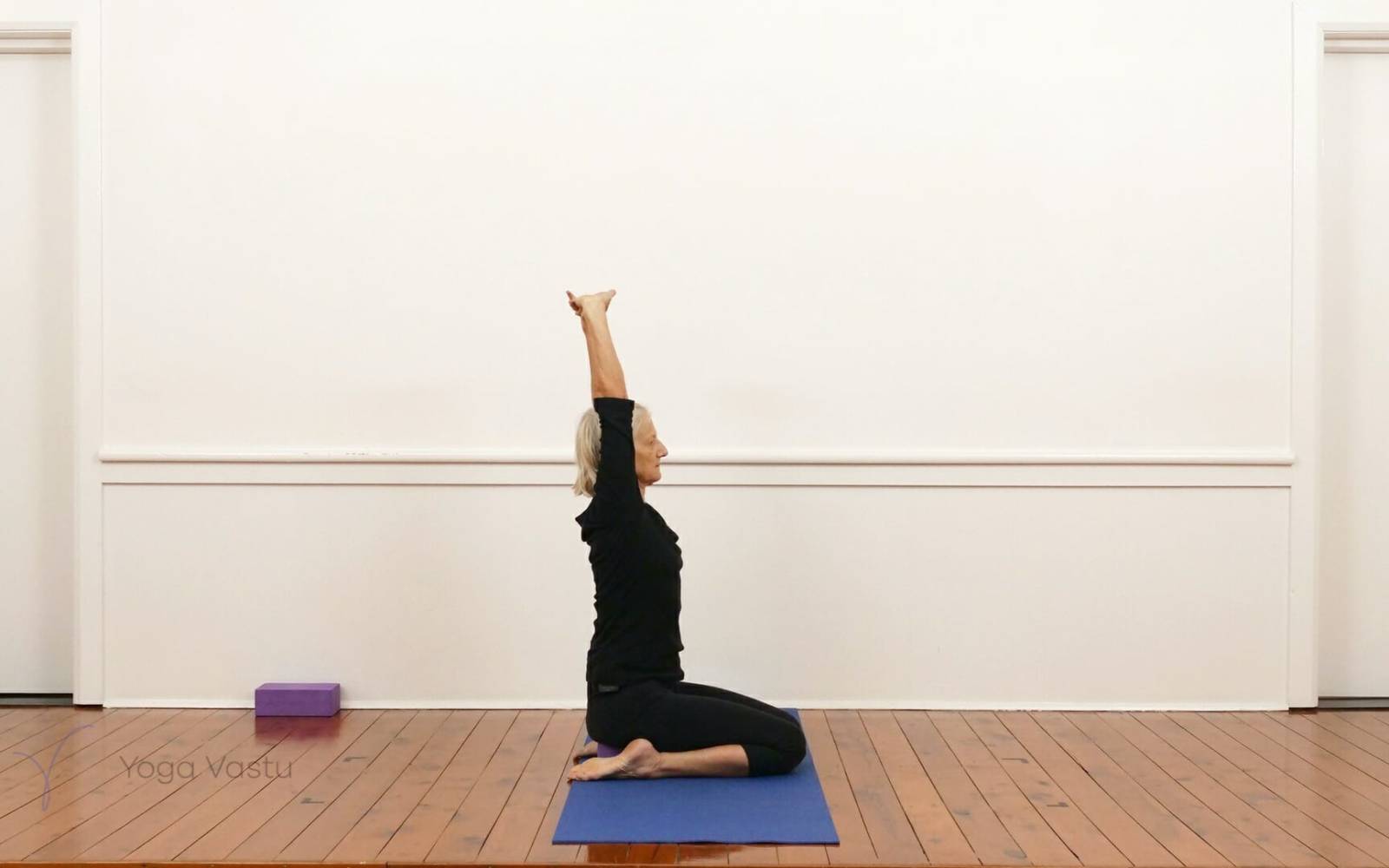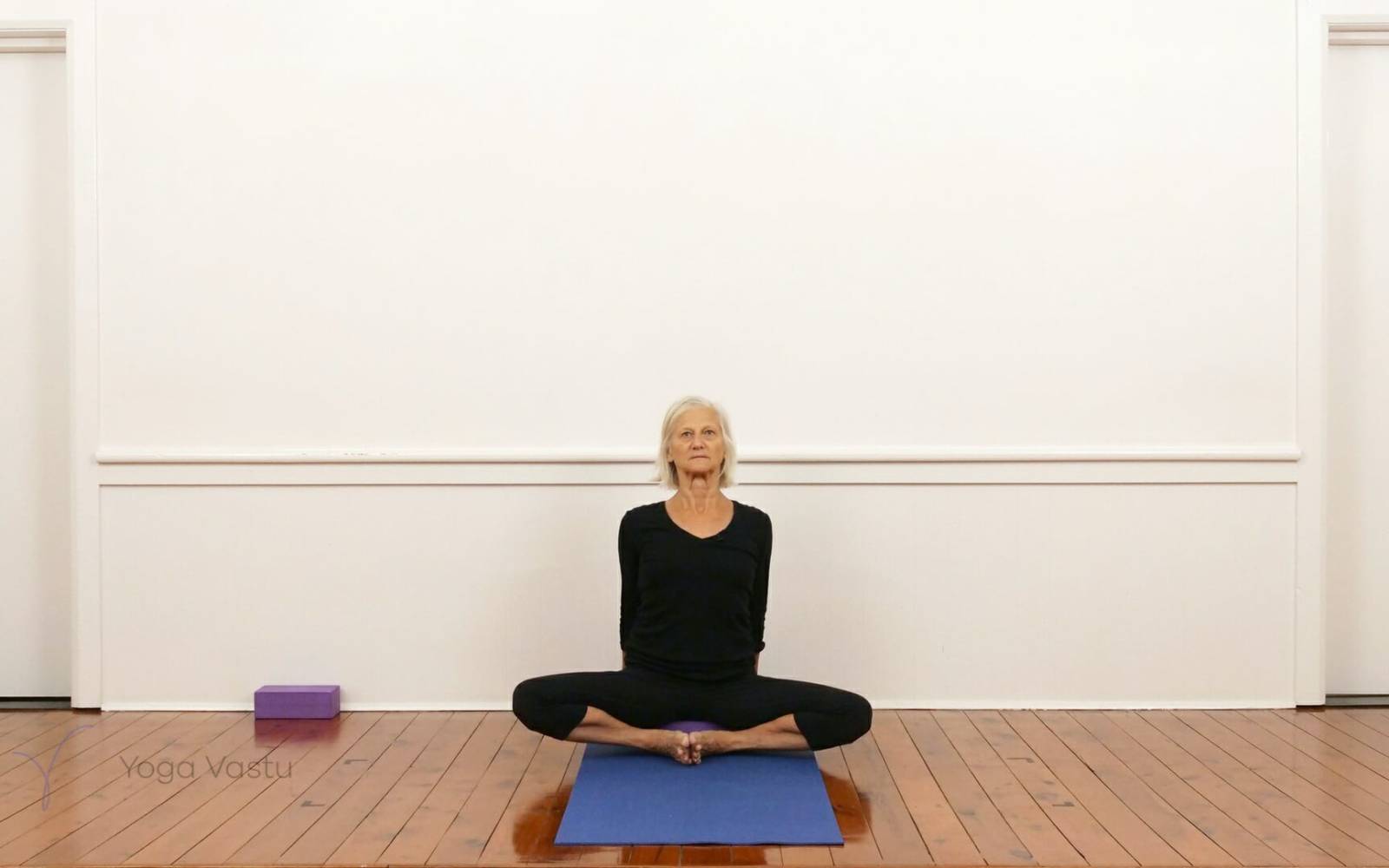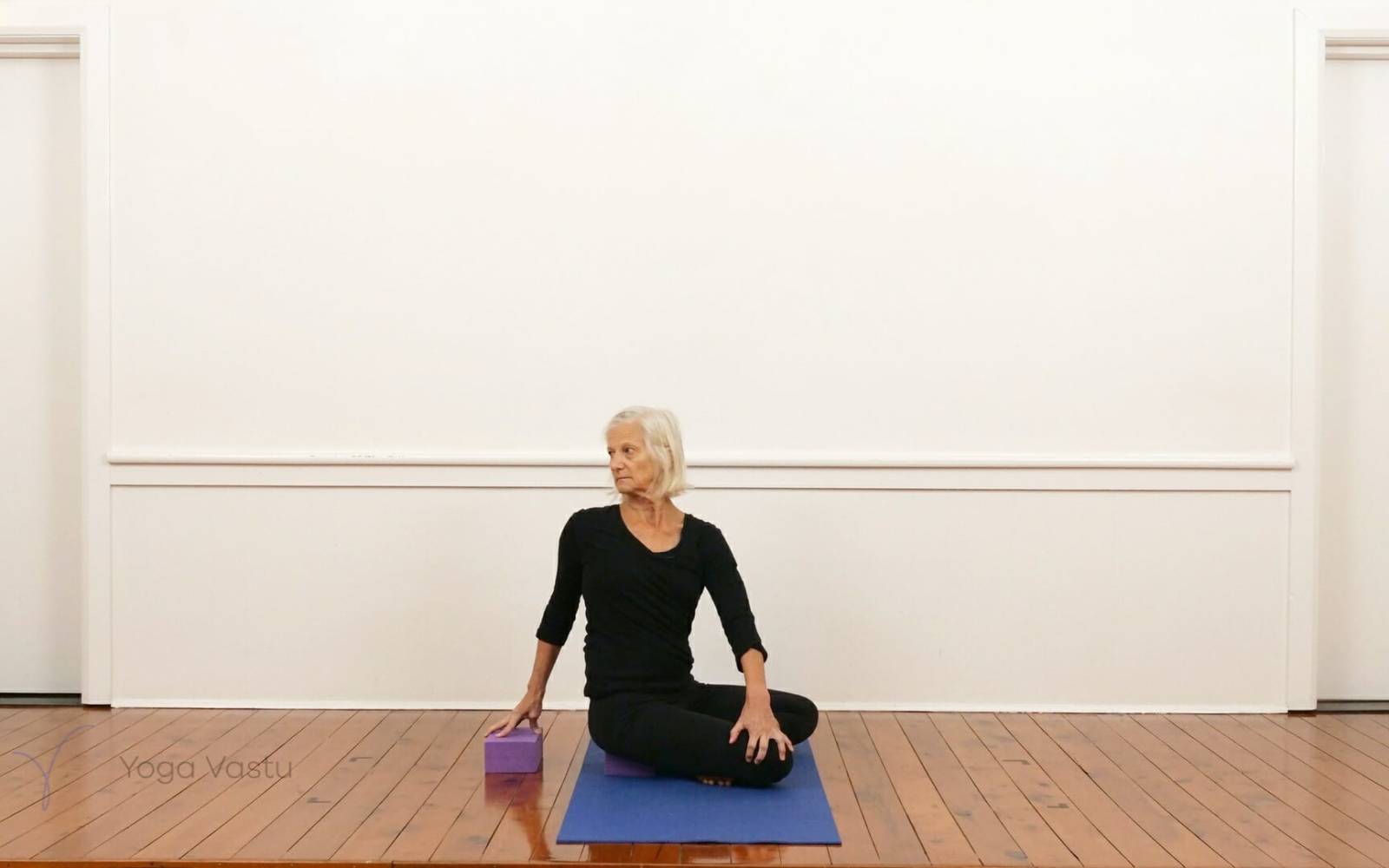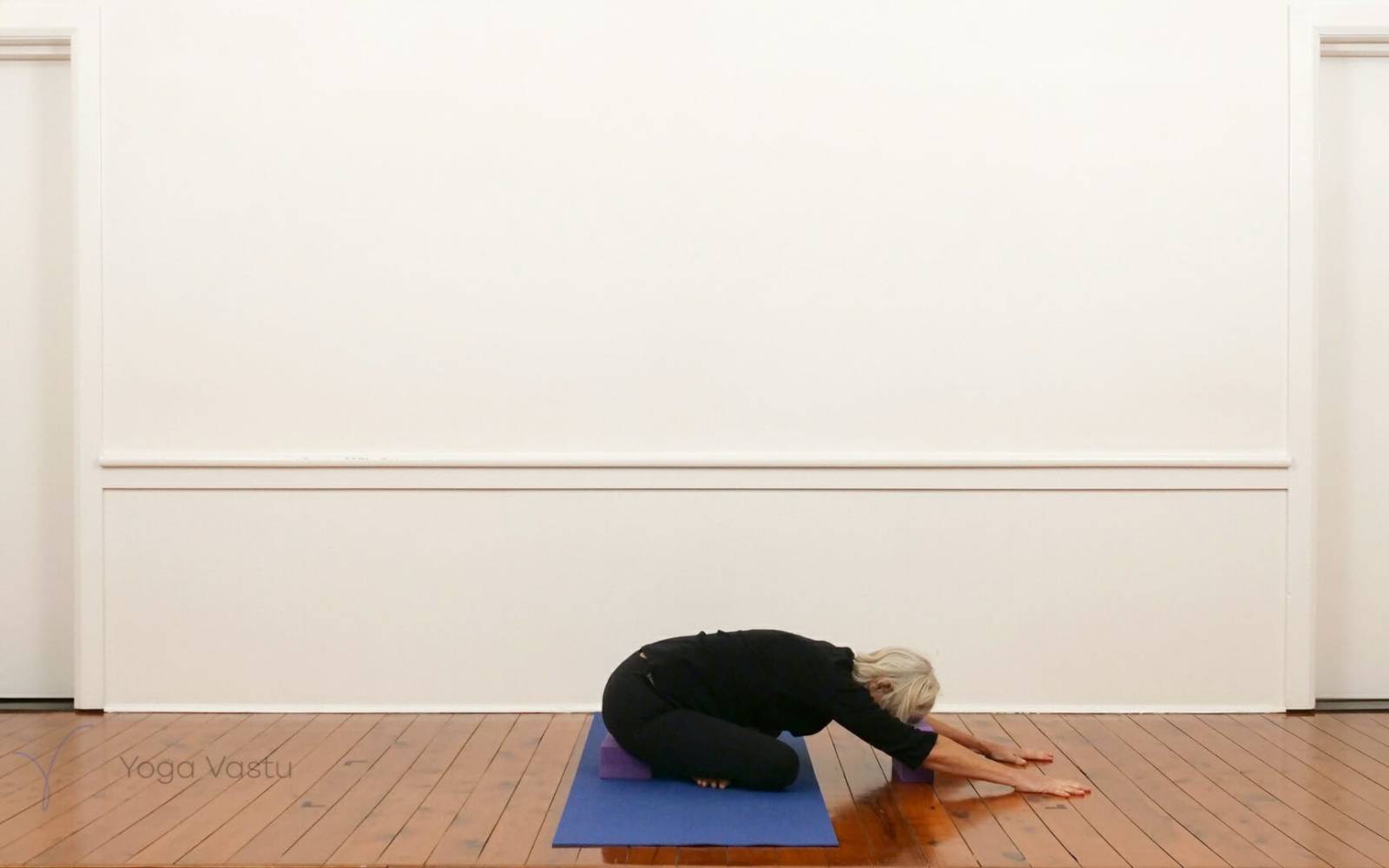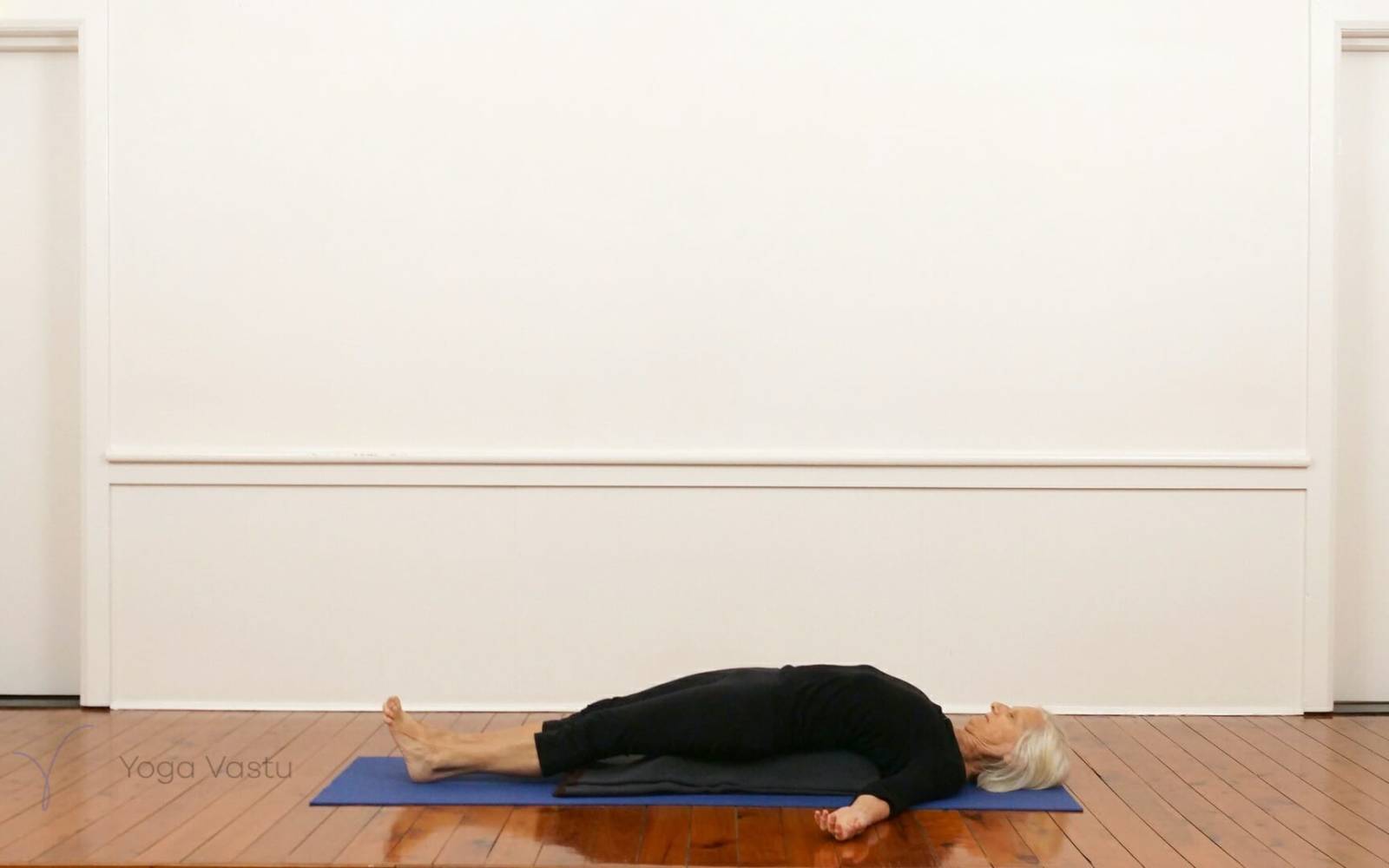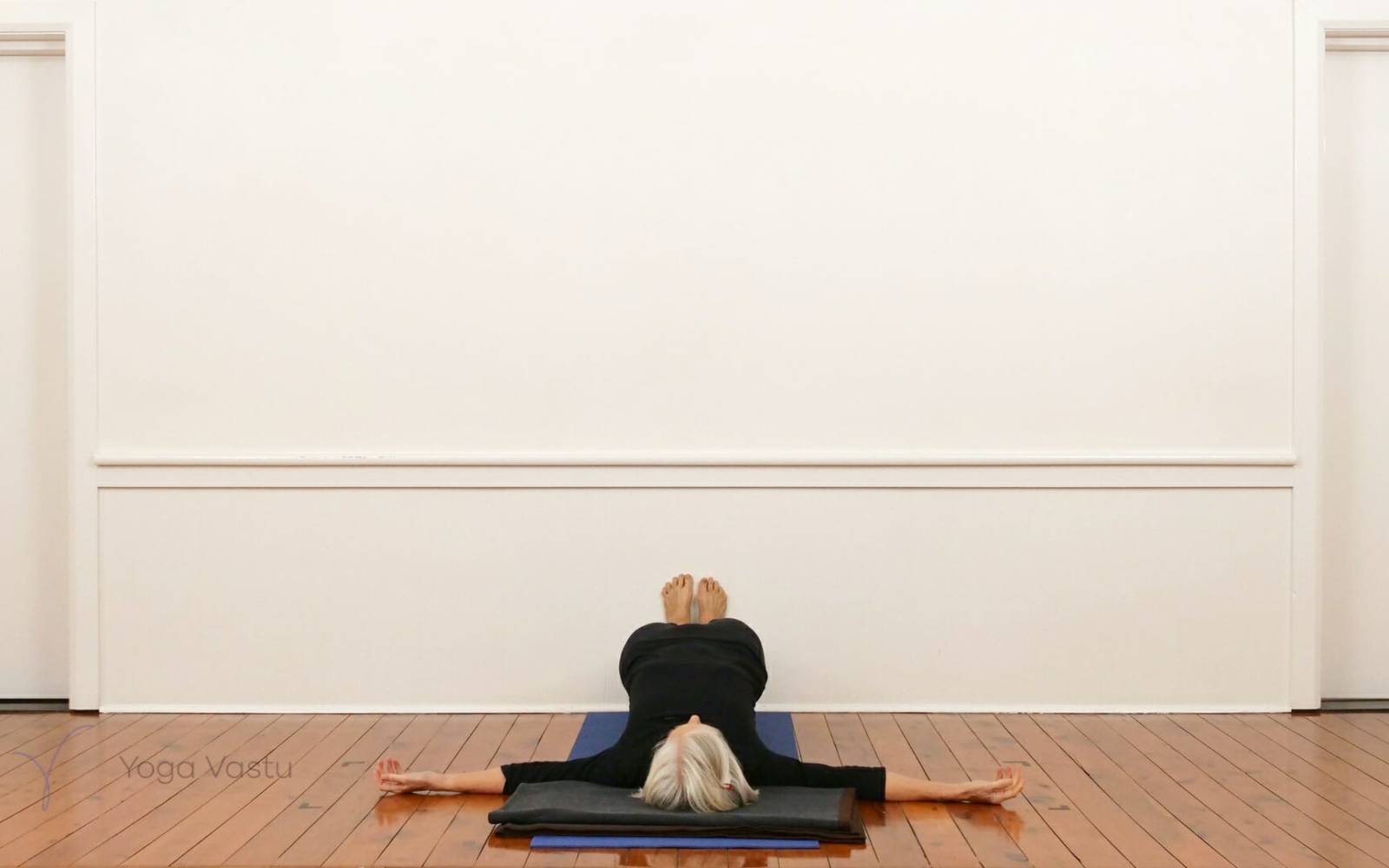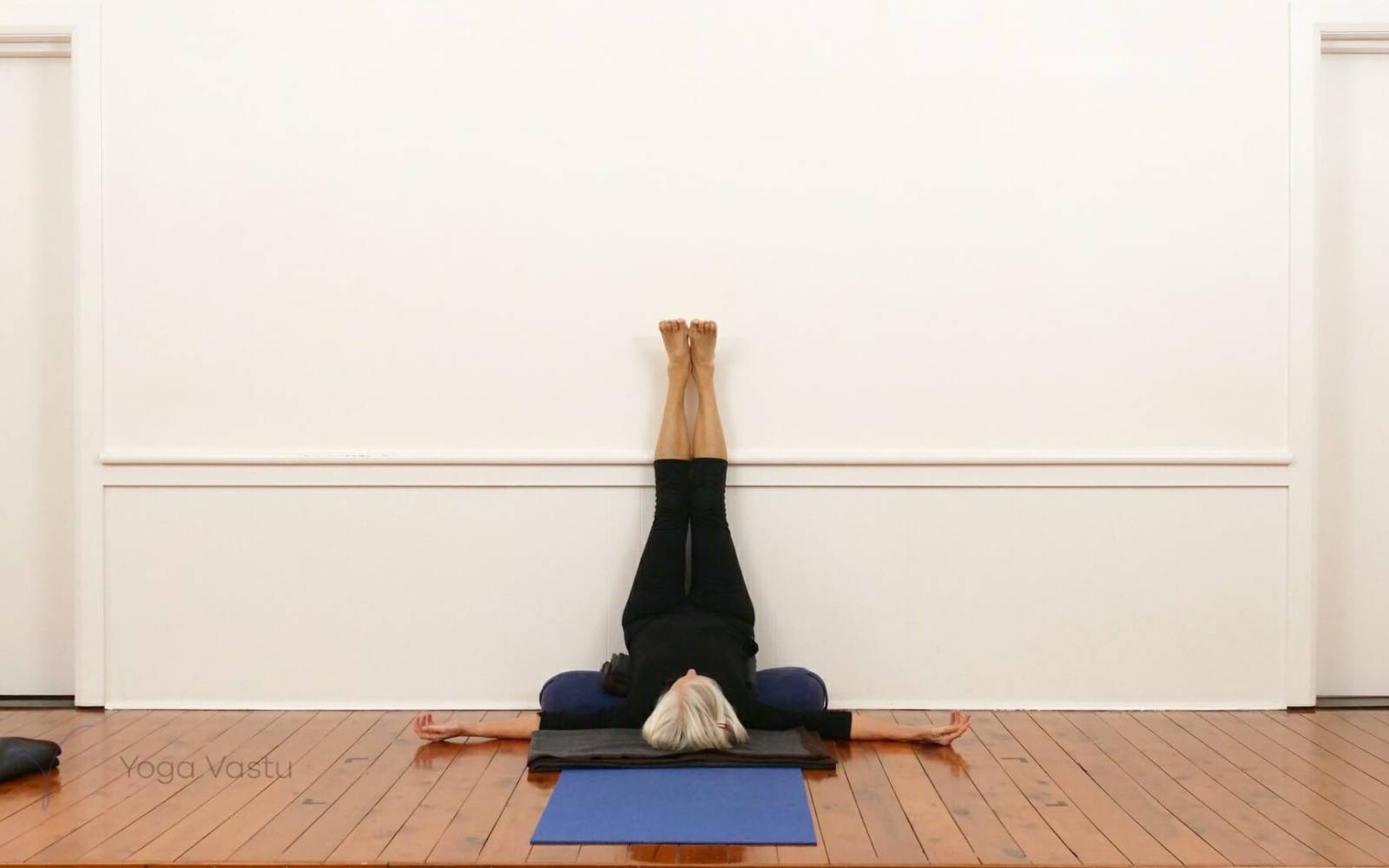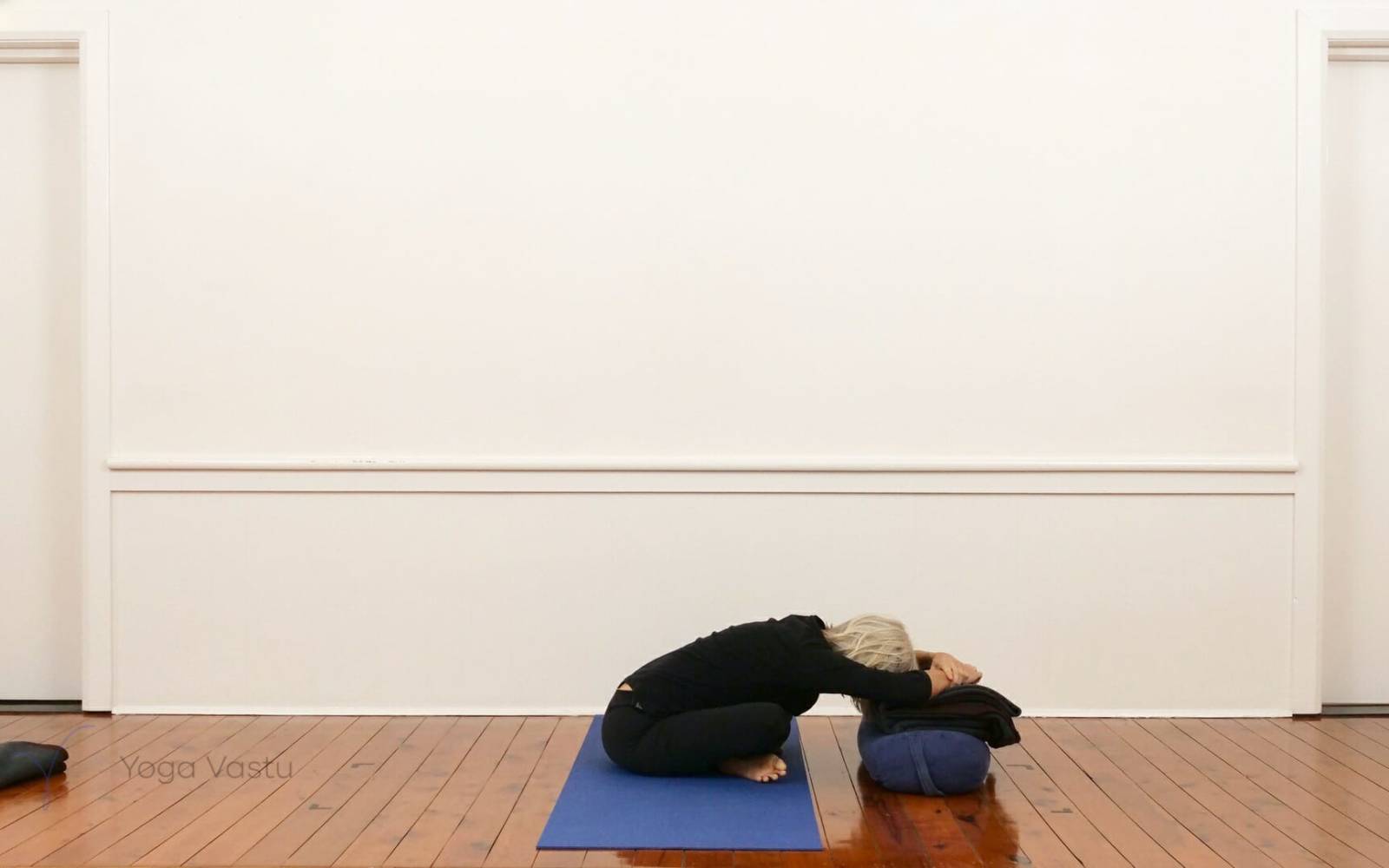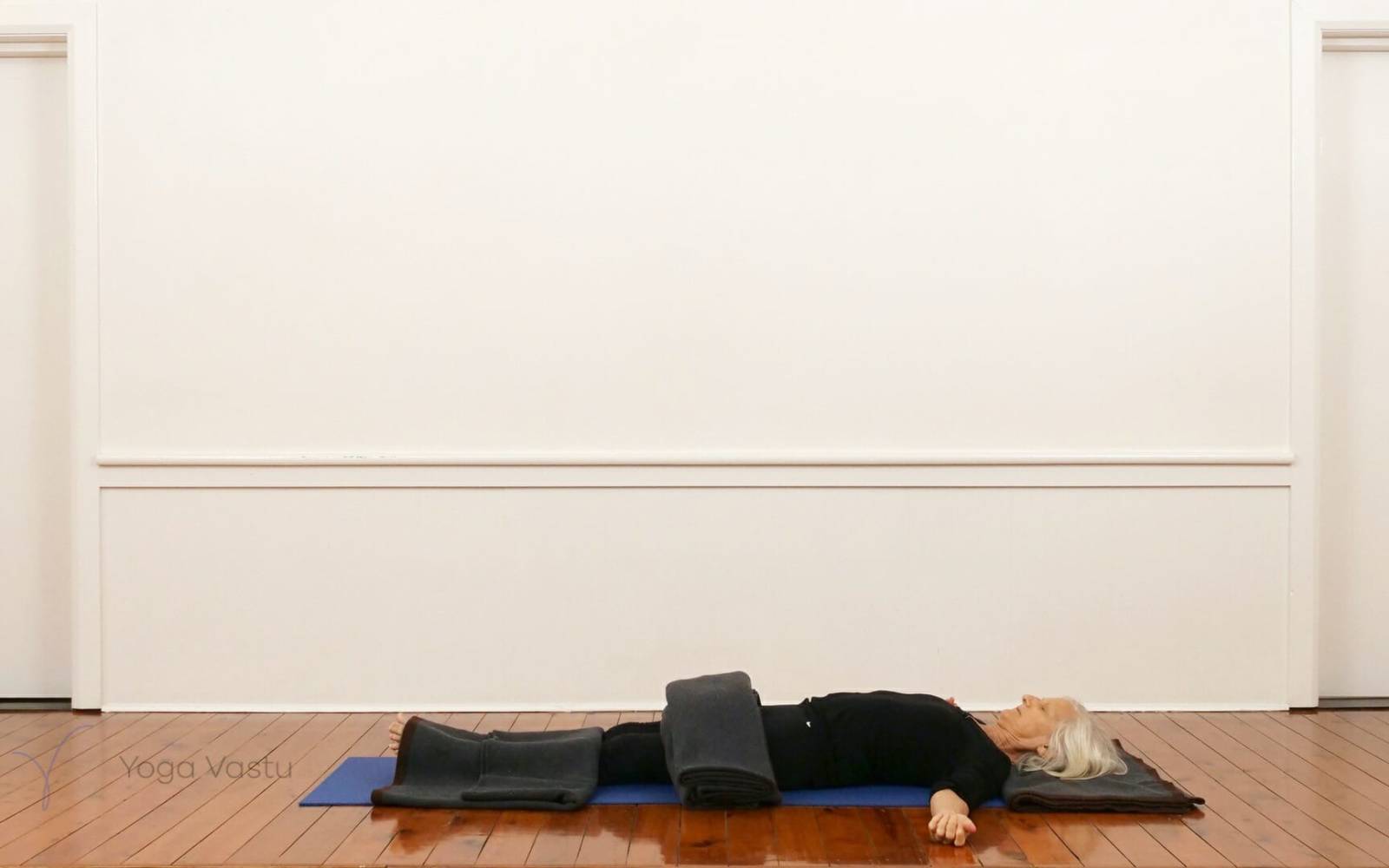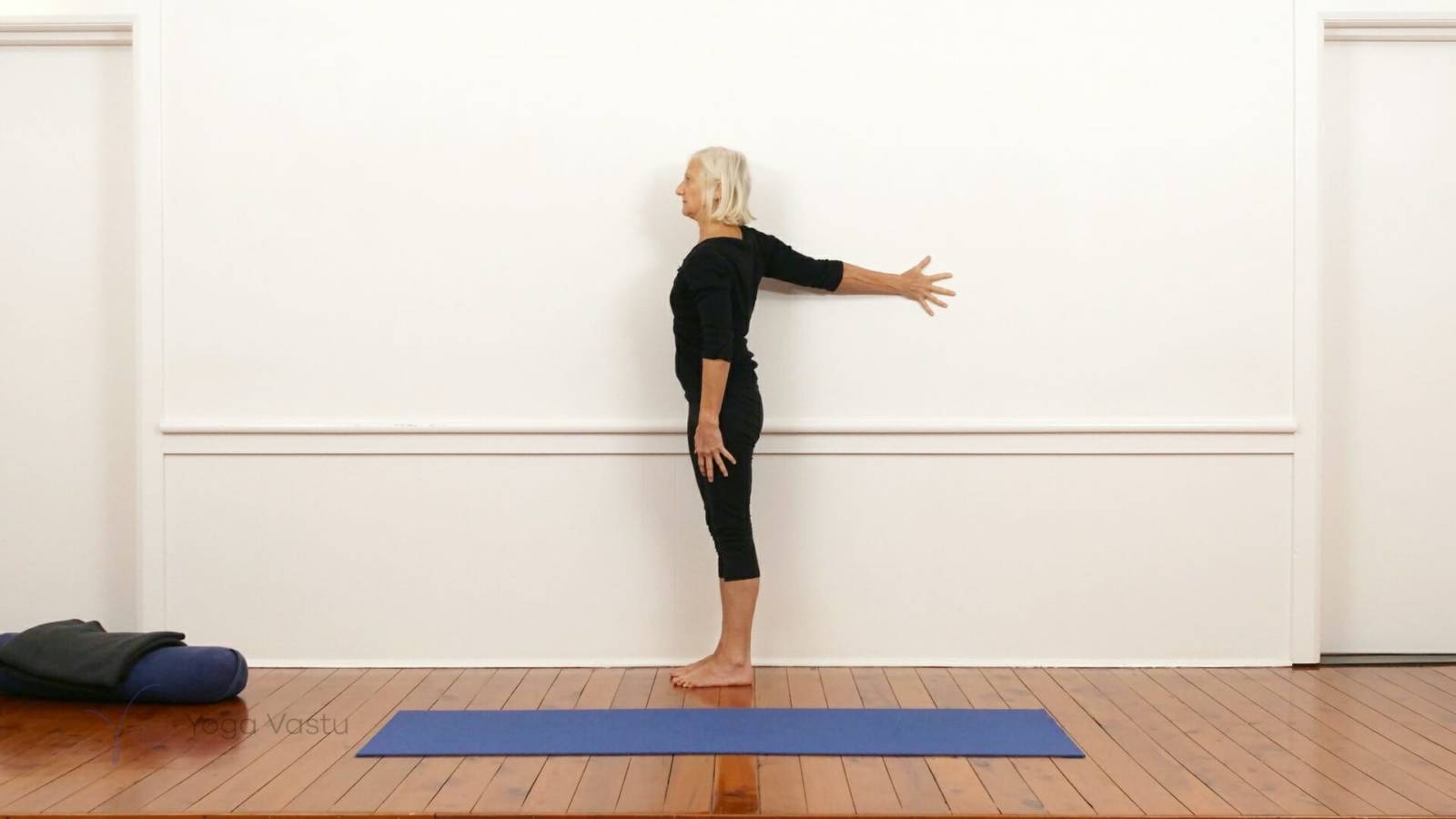Overview of this sequence
This sequence starts with a few poses to open the shoulders and hips to bring some focus to the body before we start with the restorative and pranayama section. It is suitable for all levels, as it requires only a few basic props and does not include inversions.
Step by step guide to the sequence
The session starts with Supta Baddha Konasana, Forward Virasana, and Uttanasana, all poses which will start to turn our attention inwards.
We follow on with a slower-paced Adho Mukha Svanasana (Dog Pose) to forward Virasana and back, done on the breath. This helps to help integrate the body and breath to start the sequence.
Half-Uttanasana followed by a few different hand variations to slanting blocks in Dog Pose.
Sit in Virasana, adding Parvatasana (arms extended upwards), then Baddha Konasana to bring life to the lower pelvis and inner groins and finish the seated postures with a simple cross-leg twist.
Now we come to the restorative section. Start lying back in three stages over two blocks to free the upper back and neck.
Setu Bandha with two blankets on top of a bolster or extra folded blankets, feet to the wall, and a belt around the upper thighs to give added support for the lower back and legs.
Viparita Karani completes this “quietening” phase, which also serves to relax the diaphragm and to bring our attention inwards in preparation for Savasana and Pranayama.
Set up for Pranayama lying back over a bolster or two folded blankets, placed a little below the lower shoulder blade tips.
Start with conscious breathing and then move into deeper exhalation, adding deeper inhalation after some cycles. Finally, complete 5 or 6 cycles of deep inhalation and deep exhalation (Ujjayi) taking a normal cycle of breath in between as needed.
The practice finishes with lying flat in Savasana to bring us back to full neutrality and to fully savour the quietness of the pranayama session.
Illustrated sequence of video
Download and print the free illustrated sequence of this video.
Video stills from this sequence
